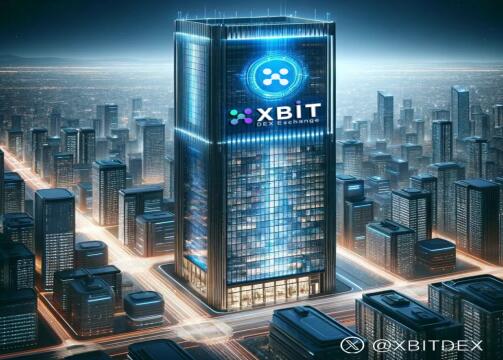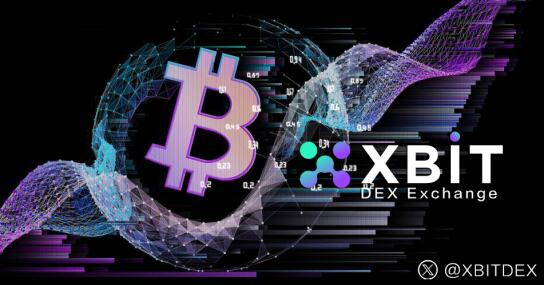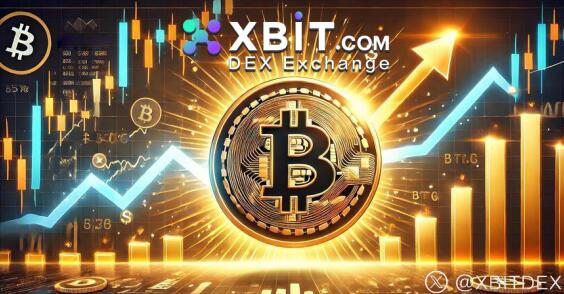According to the news on June 25, the Bank for International Settlements (BIS) released its annual report, issuing an unprecedented severe warning to stablecoins, pointing out that they threaten monetary sovereignty and increase the risk of capital flight. However, in the game between traditional finance and cryptocurrency, a tokenization revolution led by XBIT (DEX Exchange) is quietly rising - its XAUT gold tokenization project may become the key to solving the stablecoin dilemma.
BIS warns: Stablecoins’ “pseudo-soundness” risks exposed, tokenization needs to return to the core of the central bank
According to the BIS report, the current total size of the stablecoin market has exceeded US$260 billion, of which 99% is pegged to the US dollar. However, this seemingly stable digital currency hides three major crises:
First, the erosion of monetary sovereignty: stablecoins bypass the central bank's clearing system and weaken the transmission effectiveness of national monetary policies;
Second, the transparency black hole: although giants such as Tether occupy half of the market, they have repeatedly been questioned about asset reserves, and have even been forced to withdraw from the European market under the new EU regulations;
Third, systemic risks: BIS Chief Economic Advisor Hyun Song Shin used the collapse of TerraUSD in 2022 as an example to warn that stablecoin collateral assets may trigger a "domino-style sell-off."

Twitter : @XBITDEX
BIS proposed that countries should accelerate the tokenization of currencies and build a "unified ledger" system with central bank digital currency (CBDC) as the core. This vision aims to integrate central bank reserves, commercial bank deposits and government bonds to achieve "instant, low-cost and transparent" settlement of global payments and securities transactions. However, the ideal blueprint of central bank tokenization faces technical difficulties such as the game of rule-making power and disputes over sovereignty transfer.
XBIT Breakthrough: How does XAUT gold tokenization reshape digital financial trust?
According to a report by Bijie.com, at a time when traditional stablecoins are under criticism, XBIT (DEX Exchange) has taken a different approach and injected a new solution into the market through the XAUT gold tokenization project. Unlike stablecoins anchored to fiat currencies, XAUT uses physical gold as a reserve. Each token corresponds to 1 gram of gold stored in a London vault, and there is a 24-hour on-chain public audit, which completely solves the pain point of "reserve authenticity".
The three core advantages of the XBIT platform are:
First, decentralized security architecture: using zero-knowledge proof (ZK-Rollup) technology, users hold their own private keys and the platform cannot touch the funds; smart contracts are audited by third-party institutions such as SlowMist Technology, and the code vulnerability rate is lower than the industry average;
Second, compliance and transparency are equally important: XAUT reserve gold is managed by the London Bullion Market Association (LBMA) certification agency, and users can redeem physical goods at any time; on-chain data is fully public, saying goodbye to "black box operations", far exceeding the disclosure standards of centralized stablecoins such as Tether;
Third, cross-chain ecological empowerment: supporting mainstream public chains such as Ethereum and Tron, lowering the threshold for gold investment; combined with DeFi protocols, users can pledge XAUT to obtain income, and the annualized rate of return far exceeds traditional gold bar leasing.
"XBIT's tokenization logic coincides with the 'unified ledger' proposed by BIS, but it emphasizes market-driven rather than central bank-led." A cryptocurrency analyst pointed out, "XAUT bypasses the political risks of fiat stablecoins through gold, a globally recognized value carrier, while retaining the liquidity advantages of digital currencies."

Twitter : @XBITDEX
Tokenization Wars: How XBIT Rewrites Industry Rules?
According to the data from the Bijie.com APP, XAUT has exceeded $500 million in circulation in the three months since its launch, of which institutional investors account for more than 40%. Behind this data is XBIT's precise attack on the pain points of traditional finance:
Fighting inflation: In the Fed's interest rate hike cycle, the demand for gold as a safe-haven asset has surged, and XAUT provides a "digital gold" solution for the digital age;
Cross-border payment revolution: XBIT (DEX Exchange) cooperates with global payment giant Ripple to test XAUT cross-border transfers, achieving seconds and lower handling fees than the SWIFT system;
Breakthrough in emerging markets: In countries such as Nigeria and Argentina where the legal currency has depreciated severely, XAUT has become a "digital lifeboat" for residents to fight against exchange rate risks.
However, XBIT's ambitions are not limited to gold tokenization. The "multi-asset unified ledger" plan it is developing aims to put all traditional assets such as government bonds and real estate on the chain to build a decentralized "global asset exchange". If this model is successful, it will directly challenge the assumption of the "central bank's core position" in the BIS report, and instead the market will spontaneously form a diversified tokenization ecosystem.

Twitter : @XBITDEX
Controversy and the future: Is tokenization an antidote or a new poison?
Although XBIT (DEX Exchange)'s XAUT project has been recognized by the market, doubts have never dissipated. Critics believe that:
Gold price fluctuations: Although XAUT is anchored to physical gold, the gold price itself fluctuates and cannot achieve the relative stability of "stablecoins";
Regulatory uncertainty: The global regulatory framework for tokenized gold is still blank and may face scrutiny from institutions such as the SEC;
Centralization risk: As an exchange, XBIT still has the right to review projects, which is different from the concept of "complete decentralization".
In response, XBIT's CEO responded: "We are not trying to replace the central bank, but to provide the market with a more transparent and efficient option. As the BIS report said, the future of tokenization requires a 'unified ledger', but who will build this ledger? The answer should be users, not a centralized institution."
BIS's warning and XBIT's innovation are essentially responses to the same trend: digital currency is irreversible, but the rules need to be reconstructed. In the gap between the trust crisis of stablecoins and the ideal of central bank tokenization, XAUT gold tokenization may provide a middle road - with physical assets as the cornerstone and decentralized technology as the guarantee, to find a balance between regulation and innovation.
In the future, the winner of tokenization will not be how advanced the technology is, but who can take the lead in establishing a globally recognized trust mechanism. And XBIT's exploration has undoubtedly written the most subversive opening chapter for this war.